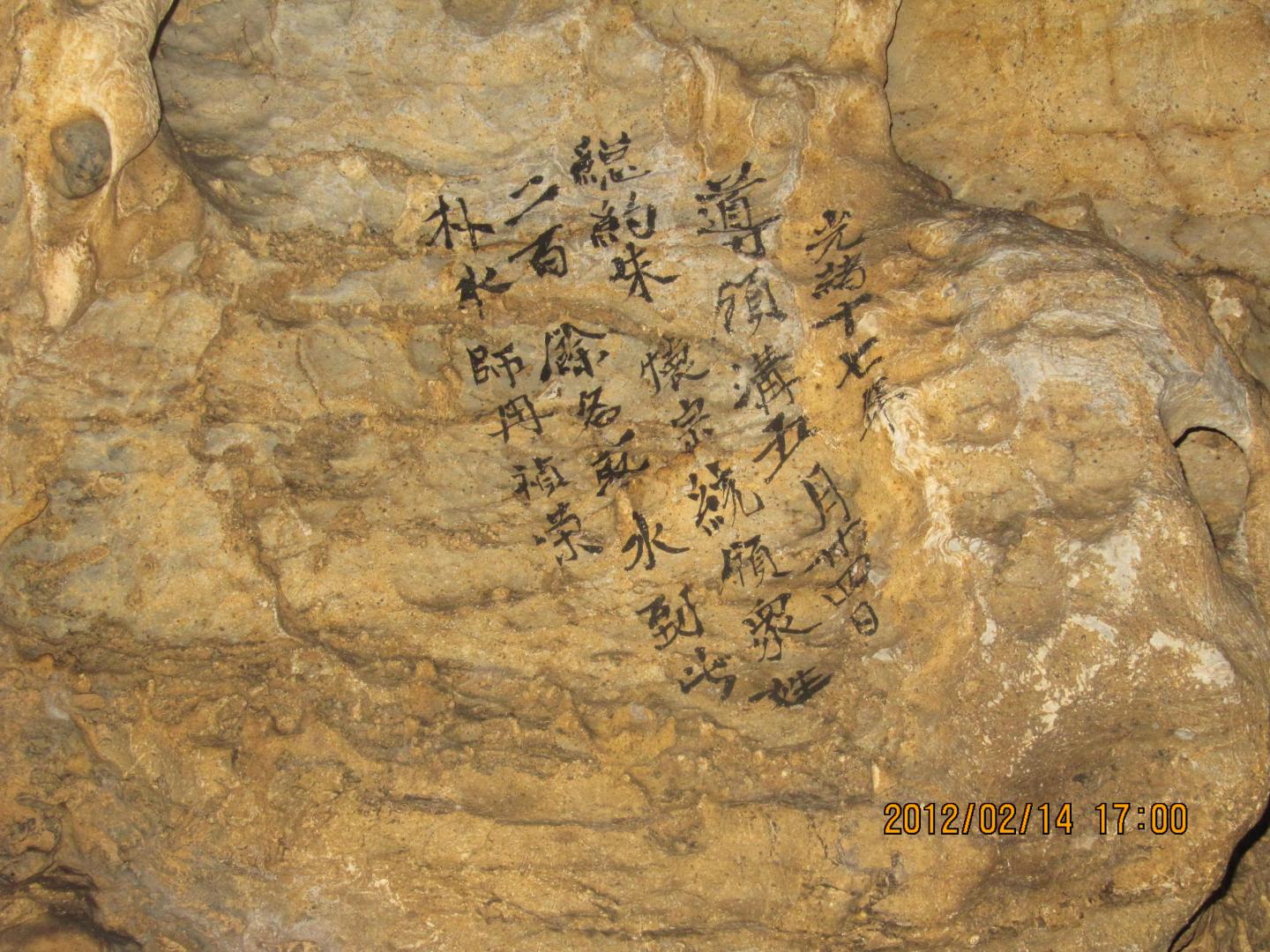
An ancient cave with centuries of Chinese characters written on the walls reveals the history of severe droughts.
By tying the cave graffiti to ratios of chemical elements in the stalagmites growing in the cave, a team of scientists created a snapshot of the climate over the last 500 years, said study co-author Sebastian Breitenbach, a paleoclimatologist at the University of Cambridge in England.
The findings also suggest how vulnerable people in this region could be to drought.
"Even slight droughts — slight excursions in the climate regime that may be just a couple of years, like two or three years — had a drastic impact on the local population in the area," Breitenbach told Live Science. [Amazing Caves: Pictures of Earth's Innards]
Cave graffiti
Breitenbach and his colleagues were studying the geology of Dayu Cave in the Qinling Mountains in southeastern China when they noticed Chinese characters, a kind of historical graffiti, emblazoned on the walls.
Unlike the modern chicken scratches found at many national monuments in Western countries, the characters said more than "Karen was here."
Sign up for the Live Science daily newsletter now
Get the world’s most fascinating discoveries delivered straight to your inbox.
One inscription, which is dated to July 27, 1596, says directly that there is a big drought, and that the writers had come to the cave to get water and to pray for rain.
Another, dating to 1891, reads:
"On May 24th, 17th year of the Emperor Guangxu period, Qing Dynasty, the local mayor, Huaizong Zhu, led more than 200 people into the cave to get water. A fortune-teller named Zhenrong Ran prayed for rain during the ceremony."
Another inscription mentions a Dragon Lake that may have been in the cave.
It's not clear why people from the past civilization were going to this particular cave and praying, or whether it had a particular religious significance, but in other regions, such as the Yucatan, caveswere seen as the underworld realm of the Gods, Breitenbach said. Because caves have a colder, more uniform temperature than surrounding environments, and water from the surface takes a while to seep into them, caves would typically be wetter during a drought than the surrounding areas, something that local people undoubtedly knew, he said.
Chemical record
To understand how the surface drought compared to the climate record, the team also analyzed the proportion of carbon, uranium, oxygen and other isotopes (elements with different numbers of neutrons) in cave formations such as stalagmites, then tied them to the historical drought periods recorded in the graffiti.
Stalagmites form from the dripping of water undergoing a chemical reaction with cave rock, so scientists can cut open a stalagmite and view each layer as a kind of snapshot in time.
The amounts of radioactive uranium and carbon, which decay at a known rate, tied specific parts of the stalagmite to particular historical times.
Because the water seeping into the cave was likely groundwater, the levels of oxygen and carbon isotopes could provide information about surface conditions outside the cave. The team found that oxygen and carbon levels rose when rainfall was low, suggesting that those markers could reliably reveal when drought conditions occurred.
Consistent picture
All told, the graffiti described seven droughts over the past 500 years, and those corresponded neatly with periods of drought recorded in cave formations, the researchers reported in a paper that was published on Aug. 13 in the journal Scientific Reports. The two pieces of evidence together strengthen the picture of the historical climate, Breitenbach said.
Other historical records also corroborate the graffiti's tales: The 1521 drought led to mass starvation and reports of cannibalism, while the 1891 drought caused widespread civil strife, the researchers wrote in their study.
The team also used the cave graffiti and the chemical data to create a model to predict droughts.
Those results imply that "in the next decade, China is in for more severe and more frequent droughts," Breitenbach told Live Science, though the model can't predict exactly where or when the droughts will occur.
Follow Tia Ghose on Twitter and Google+. Follow Live Science @livescience, Facebook & Google+. Original article on Live Science.

Tia is the managing editor and was previously a senior writer for Live Science. Her work has appeared in Scientific American, Wired.com and other outlets. She holds a master's degree in bioengineering from the University of Washington, a graduate certificate in science writing from UC Santa Cruz and a bachelor's degree in mechanical engineering from the University of Texas at Austin. Tia was part of a team at the Milwaukee Journal Sentinel that published the Empty Cradles series on preterm births, which won multiple awards, including the 2012 Casey Medal for Meritorious Journalism.










